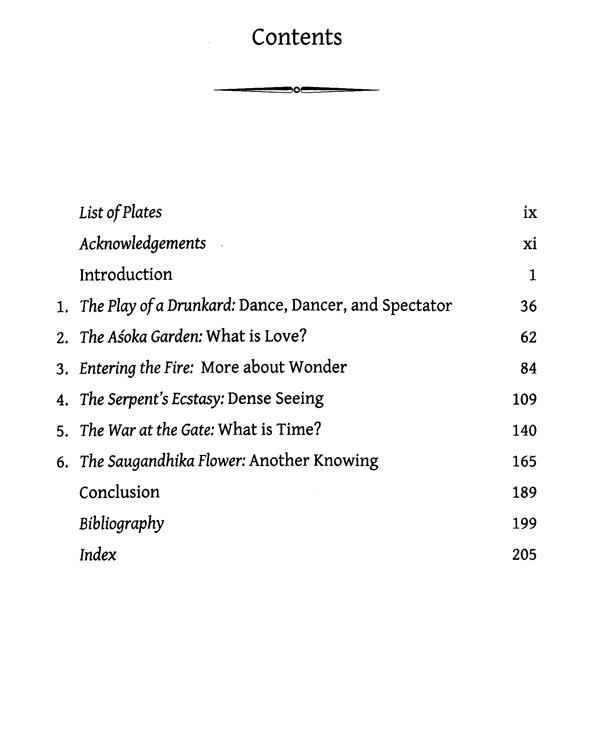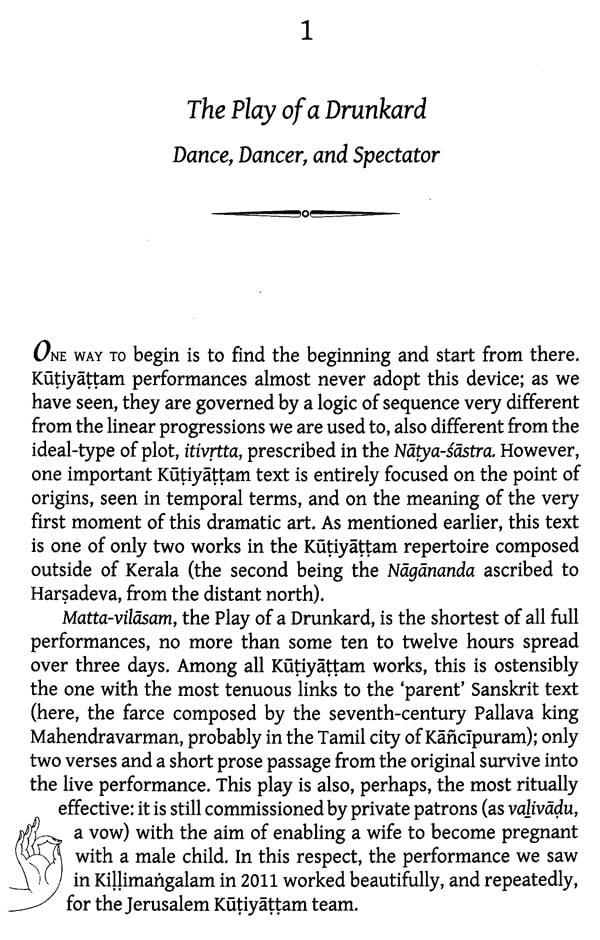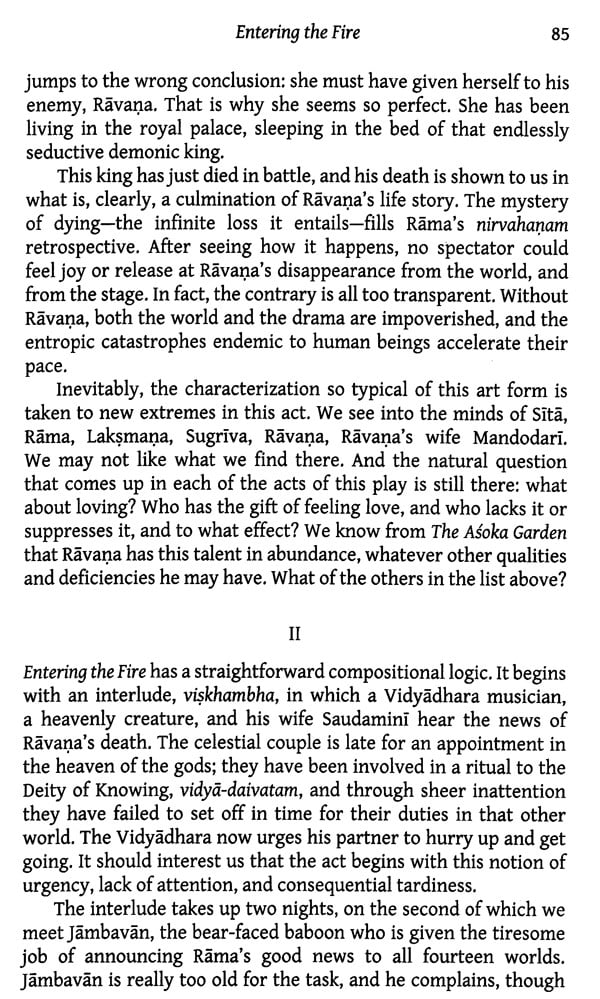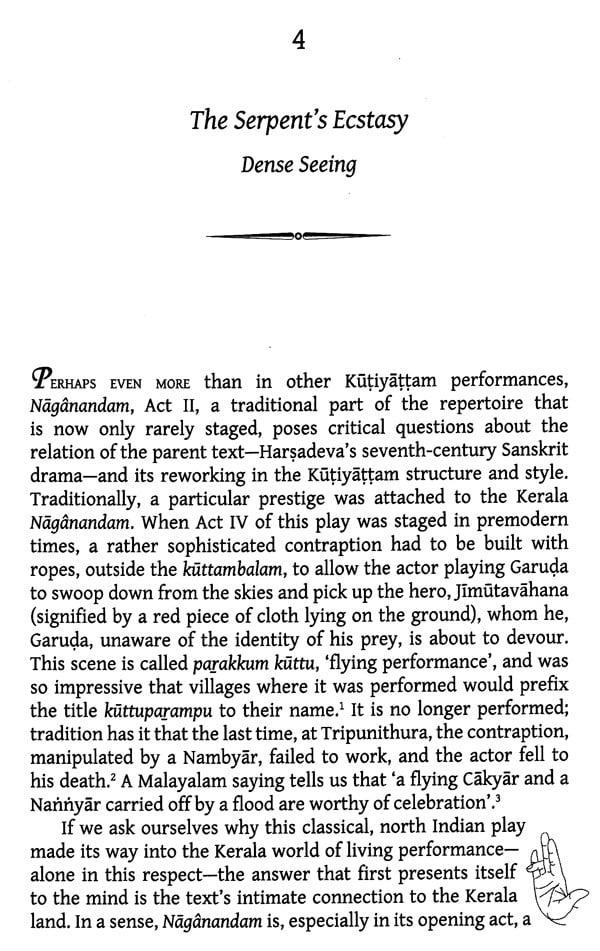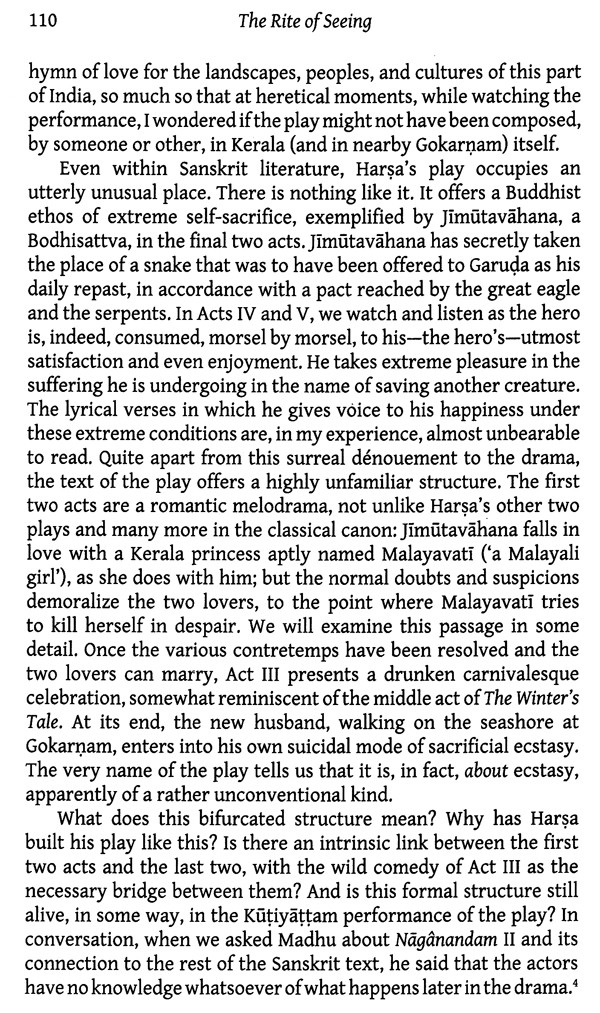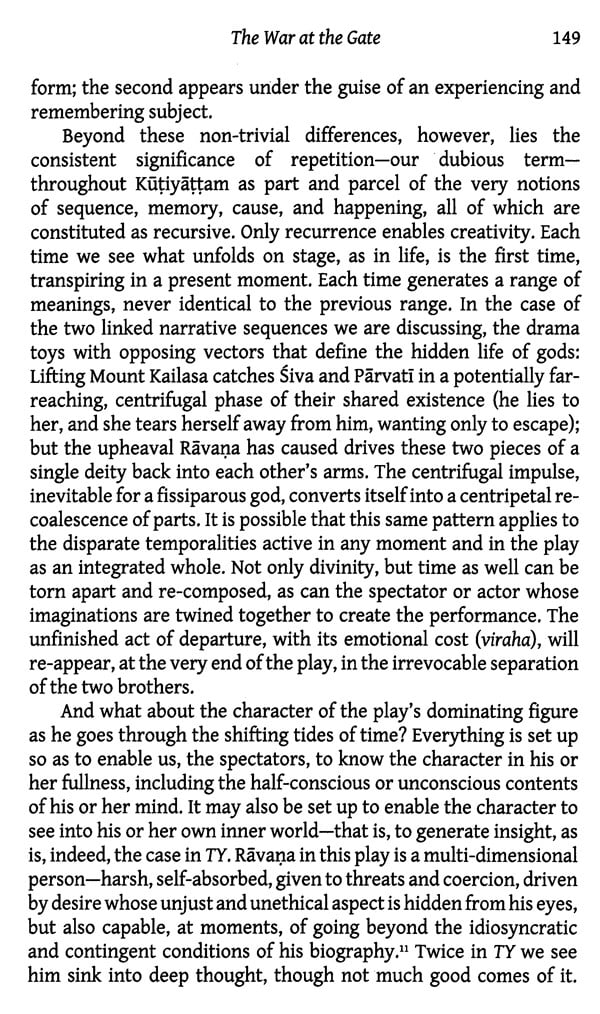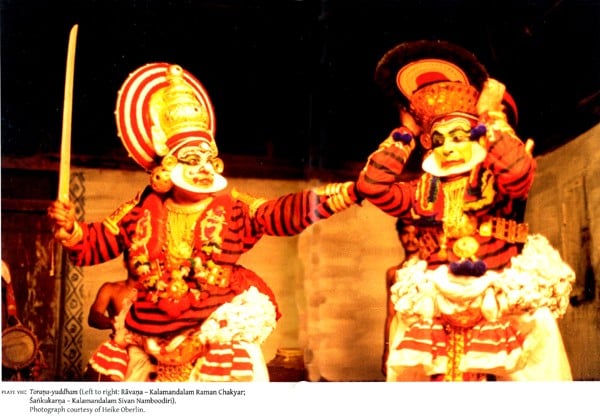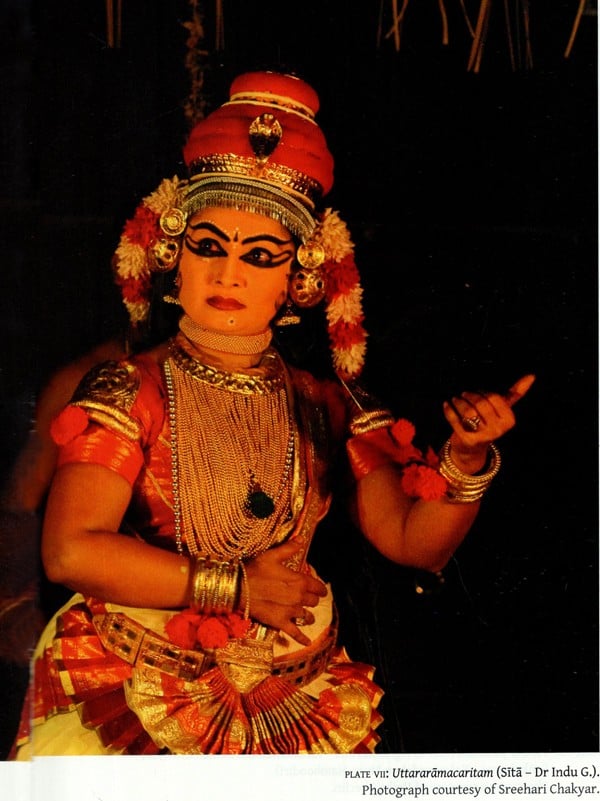
The Rite of Seeing- Essays on Kutiyattam
Book Specification
| Item Code: | UAC200 |
| Author: | David Shulman |
| Publisher: | Primus Books, Delhi |
| Language: | English |
| Edition: | 2022 |
| ISBN: | 9789355720375 |
| Pages: | 209 (15 Color Illustrations) |
| Cover: | HARDCOVER |
| Other Details | 9.50 inch X 6.50 inch |
| Weight | 450 gm |
Book Description
Kutiyattam, the only surviving live Sanskrit theatre in the world, was defined by UNESCO as ‘a masterpiece of the oral and intangible heritage of humanity’. Full performances-almost always a single act taken from a multi-act Sanskrit play-range from 12 to 150 hours (in daily or nightly segments of several hours each) and display an aesthetic brilliance and dizzying complexity that are almost beyond description. Each such act constitutes an artistic whole with its own conceptual and thematic unity. The Rite of Seeing reflects the work of the Hebrew University Kutiyattam team and of our colleagues from Tubingen, Paris, Groningen, and elsewhere, over many years of annual pilgrimages to Kerala to watch and study this art in action. It offers interpretations of seven classical performances in the light of the actors’ traditional handbooks (Attaprakaram), the Sanskrit base text, and the artists’ oral commentary that emerged naturally in the course of many days of attentive viewing. The essays are accompanied by links to extended performance moments, so that readers can see with their own eyes something of what we have seen in Mulikkuḷam and Killimangalam. Interpretative essays of this kind, although plentiful in studies of Sophocles, Shakespeare, and Chekhov, have never been attempted for Kutiyattam. The book is thus meant to introduce Kutiyattam to new audiences and to offer pathways for beginning to explore the riches of this unique and still vital tradition.
David Shulman is Professor Emeritus at the Hebrew University of Jerusalem. A student of Tamil at the feet of John Ralston Marr (School of Oriental and African Studies, London), he has specialized in the languages, literatures, and cultural history of south India, with a particular emphasis on Telugu and, more recently, Malayalam. Among his publications are More than Real: A History of the Imagination in South India (2012) and Tamil: A Biography (2016). His heart belongs to Kutiyattam, Kathakali, and Carnatic music.
FIRST, WE HAVE Sound, the hearing of sound, and seeing the sound; then sight, and the seeing of sight, and hearing what we see; with these comes thinking sound and sight and all the rest-always together, never alone. All this comes with words, in Sanskrit and Malayalam, and the strange set of melodic raga notes that inhere in the words; so these are audible words, in a way, but in another sense they are words inscribed by the movements of hands and eyes on empty space-the most powerful form of writing we know. And there is the oil lamp with its three burning wicks, one for the actor, one for the patron of the temple, and one for the god who has, through a certain ancient technique, chosen to see this particular play. The lamp is the witness, saksin; the performers sometimes say they perform mainly for the lamp, which sees them and reflects them back to themselves, refracted many times over. All this together has a name taken from Kalidasa's play Malavikagnimitra. The name is caksusa-yajna, a ritual of seeing, a festival of sight, not necessarily eyesight as we usually think of it but, more deeply, the sight interior to-perhaps pre-existing in-the space behind the eyeball and, still further back, in the seeing mind.
Kutiyattam, the rite of seeing, is the last surviving remnant of Sanskrit drama in live performance anywhere in the world. It is a continuous tradition, firmly located in central Kerala on the south-west coast of the subcontinent and going back for some centuries-minimally, five or six, possibly many more. The actors like to say that Kutiyattam is continuous with the Natya-sastra, which we tend to date to the first or second century AD, though it may be even older; and in some sense they are right, since many elements first defined in that Book of Performance do persist in Kutiyattam. On the other hand, Kutiyattam is unquestionably a south Indian, indeed Kerala-Malayalam art form, with lateral connections to other performance modes still active in Kerala and elsewhere in the south. In short, this is a classical theatre with antique roots and clearly local features, including a south Indian super-stratum or sub-stratum of meanings and a continuously expanding complexity of form, pattern, playful innovation, and restless impulse. In performance, a Kutiyattam play generates a world, an aesthetic creation resilient enough to contain performers and spectators alike over many days and nights until this world-an as-if fiction that is, by virtue of that `as-if, entirely real-is taken apart when the particular play comes to an end. This recalcitrant art form has never been theorized from within.
I hope this book, a set of interlocking essays, offers a poetics of Kutiyattam, inductively derived from witnessing many hundreds of hours of performance and amplified or nurtured by the relatively fragmentary, non-theoretical sources that we have at our disposal today. There are, now, several excellent introductory books on Kutiyattam. I recommend, above all, Sudha Gopalakrishnan's authoritative study, along with those of Dr Paulose, Margi Madhu, and the great connoisseur-savant L.S. Rajagopalan, among others. We are also fortunate to have the first modern, comprehensive study of the morphology and syntax of Kutiyattam, by Virginie Johan; this massive work will be the foundation for future studies and has informed my own. There is, in any case, no need for another work of introduction. In the next sections I will offer a sheer minimum of factual information needed to follow the essays and the digital videos; I will run through the relevant Kerala sources that are still available and that I will be referring to from time to time. Linked to these are the powerful self-reflexive utterances that characterize every Kutiyattam performance, and that help us decode the expressive aims of the art. But this volume is intended as a study of six complete performances, with an emphasis on the aesthetic, cognitive, and affective forces that they bring to the fore. I have tried to invent a language that conveys at least something of the reality one experiences as a spectator and that might allow me to formulate, as hypotheses, the driving logic of each of these plays, which are, after all, highly distinctive, well marked off from one another, even as they repeatedly quote or refer to one another.
Let us start with two characteristic, dynamic features of Kutiyattam performances-features that the tradition itself has defined as its unmistakable hallmarks that differentiate it from the classical norms of Sanskrit drama. Kutiyattam rests on two pillars: the character's retrospective, known as nirvahanam; and the technique of 'alternating acting', parkarnnattam. Let me begin with the standard theory of plot in Sanskrit drama as articulated in the Natya-sastra, a theory completely superseded by the Kutiyattam aesthetic.
Plot, itivrtta, is said to follow a normative progression through five necessary stages, avastha. There is an opening, arambha, marked by longing or the desire to act, autsukya; a second stage of effort, yatna; a central moment in which there is hope of fulfillment, praptyasa; an intervening blockage or frustration and its removal, niyatapti; and a concluding fruition, phalagama. Interwoven with these linear stages are episodic contents-movements within or accessory to the main plot-necessary to thicken the texture of the play: the artha-prakrtis, starting from a seed, bija, and continuing through the 'drop', bindu, that nurtures the seed; and subsidiary episodes and actions, pataka and prakari, that contribute to the desired effect of the artistic whole, karya. Another set of five-the sandhi junctures-unfolds from a visible beginning to a sometimes invisible counter-move (mukha and pratimukha); thence to transitory achievement, garbha; a phase of reflection, temptation, or anger, vimarsa; and an eventual integration or 'bringing together', nirvahana, sometimes classed as vibodha, awakening. The three junctures in the middle can be dropped; and the final integration should offer ananda, joyfulness. As if this convoluted system of overlapping but non-isomorphic sequences were not enough, the Natya-sastra lists another set of sixty-four sub-junctures, sandhyangas. For a sympathetic and insightful exegesis of this dramaturgical luxuriance, the reader is referred to C. Byrski's study.' For our purposes, despite the evident richness of analytical concepts available for understanding the very idea of narrative plot, nothing of the above is of any relevance to the way Kutiyattam works.
**Contents and Sample Pages**
